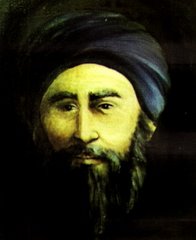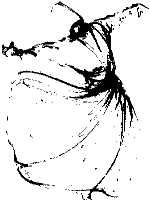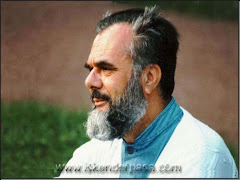The following piece was published on the Aussie Mossie blog on Monday 9 January 2006.
In the past few days, around 2.5 million Muslims from across the globe have converged on the ancient city of Mecca in central-west Saudi Arabia to perform the various rites that form part of the Muslim pilgrimage tradition known as the “Hadj”.
On Tuesday 10 & Wednesday 11 January millions more will attend prayer services and gatherings in their local areas for the feast of sacrifice (known in Arabic as “Eid al-Adha”), the most important religious and cultural festival of the Muslim calendar. The feast commemorates an event mentioned in both the Old Testament and the Koran.
The Old Testament recounts how God ordered Abraham to show his devotion by sacrificing his own son Isaac. The Qur’an is silent on the identity of the son, though Islamic tradition suggests the proposed sacrificial son was to be the elder Ishmael.
Just as Abraham places the blade on his son’s throat, the command is given to sacrifice a ram instead. The rites of the Hadj conclude with pilgrims sacrificing an animal, following the example of Abraham. Hadj also involves a variety of other acts commemorating the sacrifices made by Abraham and members of his family to establish monotheism in the region.
These acts include circling a cubic structure known as the Kaaba (believed to have been built by Abraham) which is draped in fresh black embroidered cloth each year. Near the Kaaba are two hills (named “Safa” and “Marwa”), between which it is believed Ishmael’s mother ran to fetch water for her infant child. Pilgrims run between these two hills following in Hagar’s footsteps.
The highlight of the Hadj is the assembly on Mount Arafat, regarded as a preliminary to the gathering of all humanity on Day of Judgment. In January 2005, TVNZ reported that over 20,000 buses were used to carry a portion of the millions of pilgrims who made the journey last year.
At one time, travel to Hadj was a difficult and dangerous journey. American Muslim writer Michael Wolfe recounts the pre-jet-age perils of pilgrims in his book “One Thousand Roads To Mecca”, an anthology of 10 centuries of Hadj travel writing.
Wolfe’s characters include Ibn Battuta (Islam’s very own Marco Polo) who travelled by land and sea during the 14th century over some 75,000 miles and over a period of 30 years. Also included are “fake” pilgrims who smuggled themselves into Mecca defying its ban on non-Muslims entering its gates, such as Englishman Joseph Pitts who managed to sneak into Mecca undetected in 1685.
The journeys recorded also include the diary entries of an Australian woman Winifred Stegar who married an Indian merchant in Singapore. Her pilgrimage was performed in 1927, with she and her Indian husband running out of money and having to leave some of their children behind along the way.
Wolfe’s own Hadj journey, described in his book 1993 “The Hadj – An American’s Pilgrimage to Mecca”, was a much safer affair. Like most modern pilgrims, he travelled by air. The grandson of an Orthodox Jewish religious scholar, Wolfe adopted Islam after spending time in Morocco.
In many Muslim cultures, Hadj represents the culmination of a lifetime of devotion with the “Hadjis” (as those making the journey are called) leaving the journey until later years. It is said that a person’s entire adult life of sins is erased by a successful Hadj.
On the other hand, the delayed Hadj is also the subject of wry humour. Hadjis are often jokingly regarded as veteran sinners seeking a “quick fix” to their perilous spiritual status. An Urdu saying goes: “After eating several thousand mice, the elderly cat finally decides to set off for Hadj!”
But with hundreds of elderly Hadjis dying each year, and with an increased sense of religiosity amongst young Muslims, the average age of pilgrims appears to be decreasing.
In Malay and Indonesian cultures, it is traditional for Hadj to be performed in one’s early adult years. And amongst Australian pilgrims, young adults are also heavily represented.
Sydney’s Sun-Herald reported on December 11 2005 of a group of young Muslims from the Sydney Muslim heartland of Lakemba making preparations for the journey. One of them was Omar Abas, a 26 year old software engineer and a personal friend of the writer.
Omar’s father first went to Hadj at age 65, and his own decision to go for Hadj relatively young is unusual in the context of his parents’ Lebanese heritage wherein leaving Hadj to the end of one’s life “was the traditional Lebanese mentality. You live your life and do what you want, and then go to Hajj.
“For my parents' and grandparents' generations, religion played a small part in their upbringing. Today it’s different. Religion is very important to young Muslims because it is a way of life.”
For those Muslims not at Hadj, the time is one for feasting with family and friends. Non-Muslim readers with Muslim work colleagues should remind them of this fact at next week’s work lunch. But sorry, most of us won’t buy you a ham sandwich or a schooner of VB!
Words © 2006-09 Irfan Yusuf
Bookmark this on Delicious












No comments:
Post a Comment